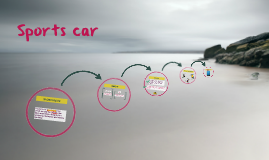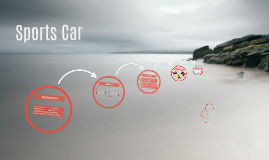SPORTS CAR
Transcript: Pitch Deck COMPANY LOGO DD/MM/YYYY Investor Introduction Introduction A sports car, or sportscar, is a small, usually two-seater automobile designed for spirited performance and nimble handling.[2][3] The term "sports car" was used in The Times, London in 1919.[4] According to the Merriam-Webster dictionary, USA's first known use of the term was in 1928.[2] Sports cars started to become popular during the 1920s.[5] The Problem People have problem The (Bad) solution Our solution Sad People Happy People Definition A car may be a sporting automobile without being a sports car. Performance modifications of regular, production cars, such as sport compacts, sports sedans, muscle cars, pony cars and hot hatches, generally are not considered sports cars, yet share traits common to sports cars. Certain models can "appeal to both muscle car and sports car enthusiasts, two camps that rarely acknowledged each other's existences."[17][18][19] Some models are called "sports cars" for marketing purposes to take advantage of greater marketplace acceptance and for promotional purposes.[20] High-performance cars of various configurations are grouped as Sports and Grand tourer cars[21] or, occasionally, just as performance cars. Definition 3 $26 54 Market Size 3 $26 54 Market Size Competitive Analysis Economical Quality Co. A Competitor A name Strengths Weaknesses Co. B Competitor B name Strengths Weaknesses Co. D Competitor D name Strengths Weaknesses Co. C Competitor C name Strengths Weaknesses Strengths Weaknesses COMPANY LOGO Drivetrain and engine layout Drivetrain and engine layout The drivetrain and engine layout significantly influences the handling characteristics of an automobile, and is crucially important in the design of a sports car.[23][24][25][26][27] The front-engine, rear-wheel-drive layout (FR) is common to sports cars of any era and has survived longer in sports cars than in mainstream automobiles. Examples include the Caterham 7, Mazda MX-5, and the Chevrolet Corvette. More specifically, many such sports cars have a front mid-engine, rear-wheel drive layout (FMR), with the centre of mass of the engine between the front axle and the firewall.[28][29][30] Lamborghini Aventador The Lamborghini Aventador is a mid-engine sports car produced by the Italian automotive manufacturer Lamborghini. In keeping with Lamborghini tradition, the Aventador is named after a fighting bull. Aventador (pronounced [aβentaˈðoɾ]) earned the Trofeo de la Peña La Madroñera for its courage in the arena in Zaragoza, Spain, in 1993.[ The BMW i8 is a plug-in hybrid sports car developed by BMW. The i8 is part of BMW's electric fleet "Project i" being marketed as a new sub-brand, BMW i. The 2015 model year BMW i8 has a 7.1 kWh lithium-ion battery pack that delivers an all-electric range of 37 km (23 mi) under the New European Driving Cycle. Under the United States Environmental Protection Agency cycle, the range in EV mode is 24 km (15 mi) with a small amount of gasoline consumption. Its design is heavily influenced by the BMW M1 Homage concept car, which in turn pays homage to BMW's last production mid-engined sports car prior to the i8: the BMW M1. BMW i8 Advantages and Disadvantages Advantages and Disadvantages If you own a nice supercar, for example, a Ferrari 458. The acceleration on mostly all supercars is very fast. But one of the disadvantages of having a supercar is that you can’t just park them anywhere because they might get scratched. And the maintenance for a Ferrari is more than $5,000 so you have to be careful where you park it. Another good thing is the eye-catching design of most of the supercars. The disadvantage of that is that people tend to box you in on a highway because they are looking at your car even though they don’t realize it. So you have to keep moving around and accelerating. Also, the handling of a supercar is unreal! I know that because since all the boys in my family including my dad like cars, I have driven a supercar. My dad used to own a Ferrari Scuderia and he would allow me to sit on his lap when I used to be smaller and handle the steering-wheel while he controls the acceleration and brakes. Talking about brakes, the braking on mostly all supercars is superb! I also know that because I have a Bentley Continental GT and I drove it once handling both the steering wheel and the acceleration and brakes. Another disadvantages is the trunk. If you do a lot of shopping or if you need to put anything in the trunk it might be a problem. That’s because the trunks aren’t as big in many supercars so you may not have that much space. The seats are a problem too because all supercars have 4 seats. Many supercars also have only 2 seats. As I said before, if you have a flashy sports car you may be noticed more to the public and usually need to drive faster than the speed limit. And due to that, you might get speeding tickets. However, the advantages of owning a supercar often outweigh the disadvantages. If you own a

















